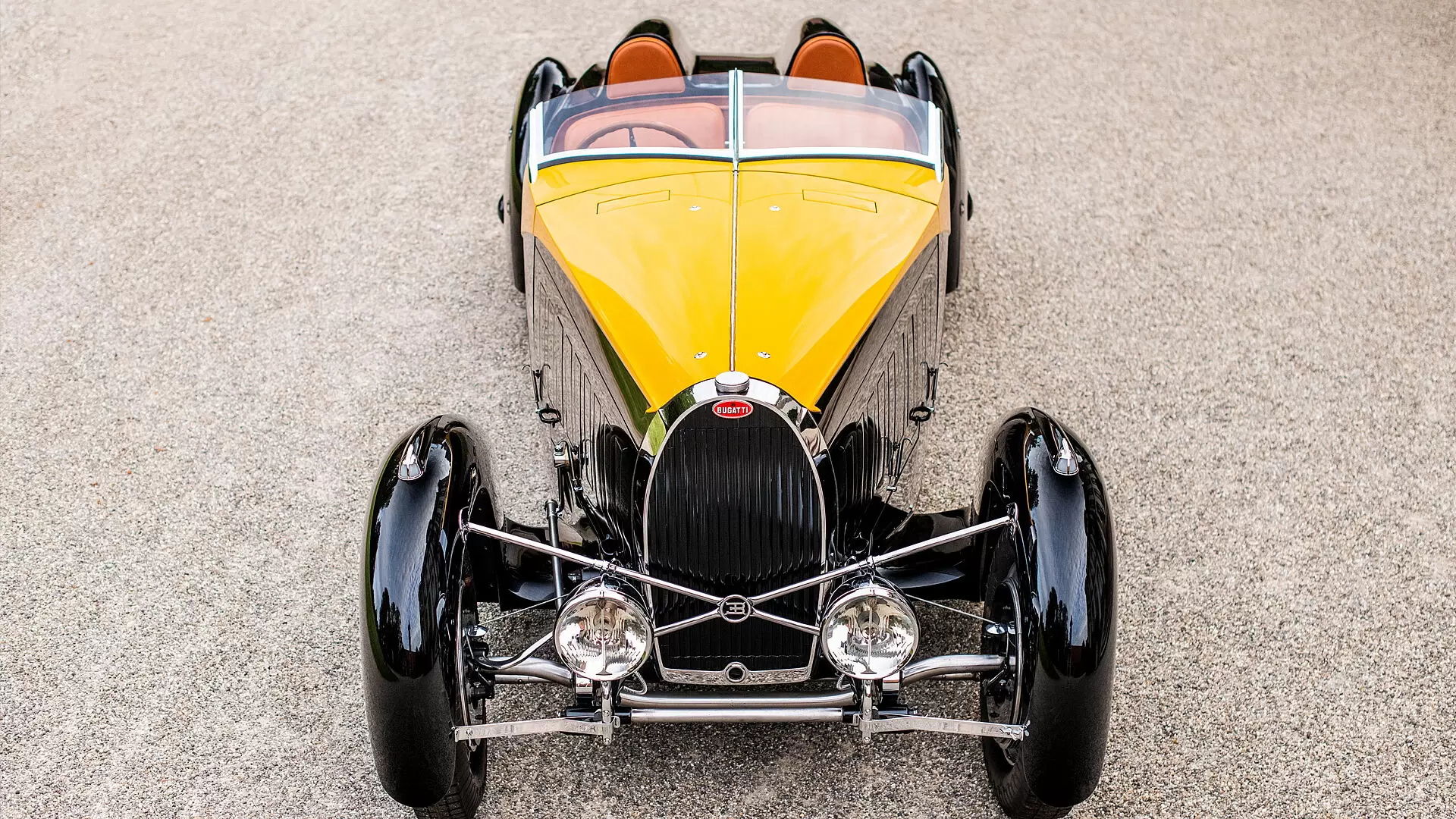Exquisite design and superlative engineering underpin everything bugatti has created in its long, illustrious history. but even among enduring greatness there are some models that stand out as extra special; the bugatti type 57 roadster grand raid usine is one such car. as rare and mysterious as it is beautiful, this is the only example in existence.
In front of an audience of the global automotive press and car enthusiasts, the Bugatti Type 57 Roadster Grand Raid was unveiled at the Salon de l’Automobile in Paris in October 1934. One of a number of body types used for the legendary Bugatti Type 57, the ‘Grand Raid’ was specifically designed for competition – the world ‘raid’ being used to describe a long and arduous rally in French.
There were only ten ‘Grand Raid’ chassis ever built, but perhaps the most intriguing of them all is the Type 57 Roadster Grand Raid Usine and its iconic coachbuilt body, which was unveiled at the Salon de l’Automobile in Paris. This one-of-a-kind example featured an aluminum body. The only model known to have been built is chassis number 57222 which is finished in black and yellow – the favorite colors of Bugatti’s founder, Ettore Bugatti.
“The Bugatti Type 57 Roadster Grand Raid Usine is an exceptional piece of Bugatti’s heritage in every aspect and one that embodies all that Bugatti stands for in the 21st century,” says Christophe Piochon, President of Bugatti Automobiles. “It was engineered for performance and designed with the highest standards of craftsmanship and luxury. It is a luxury sports car, the inspiration for modern Bugatti cars.”
Mystery surrounds the Bugatti Type 57 Roadster Grand Raid Usine: ‘Usine’ was never an official nameplate of Bugatti and it’s thought Jean Bugatti, son of Bugatti founder Ettore, designed the car.
The Type 57 Roadster Grand Raid models differed from versions like the Type 57SC Atlantic and Type 57S Atalante in that they were designed to race, made evident by the streamlined and elongated fenders, V-shaped windscreen and aerodynamic headrest supports. The steering column angle was adjusted to move the driver further backwards in the chassis, and the gear lever, handbrake and pedals were also repositioned.
Shortly after astonishing the world with its beautiful design and high-specification chassis at the Salon de l’Automobile in Paris, the Type 57 Roadster Grand Raid Usine was entered into the Paris-Nice rally by legendary racer Pierre Veyron – the man whose name was given to the first modern-era Bugatti, the 2005 Veyron hypercar. In April 1935, at the hands of Grand Prix driver Robert Benoist, the Type 57 Roadster Grand Raid Usine took first place in the Chavigny hill climb event.
In 1946 the car was sold to its first post-war owner. Under their ownership it was modified, which included alterations to the lights in the fenders. These alterations were later removed, fully restoring the car back to its original configuration – as it was seen at the Salon de l’Automobile. Since 2001 this Type 57 Roadster Grand Raid Usine has been on display in the Louwman Museum in The Hague.
The Louwman Museum in The Hague is the place where more than 130 years of progress, innovation and design are highlighted by the unique collection of more than 275 splendid examples from the history of the automobile. Showcasing the world’s oldest private collection of historic cars, it is the perfect home for this incredibly rare piece of automotive history. Founded in 1934, it holds one of the finest collections of landmark cars and motorcycles in the world and has remained in the possession of the Louwman family since its opening. Today it is owned by Evert Louwman, the son of founder Pieter Louwman. This spectacular automotive collection is housed in one of The Netherlands’ most impressive buildings, designed by Driehaus Prize-winning architect Michael Graves and located on The Hague’s Leidsestraatweg.











